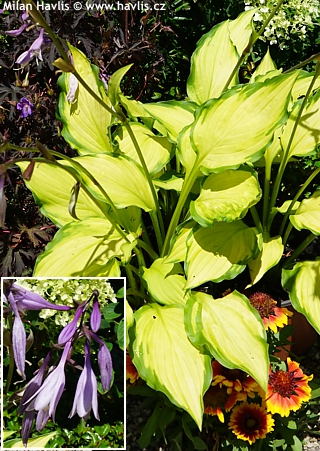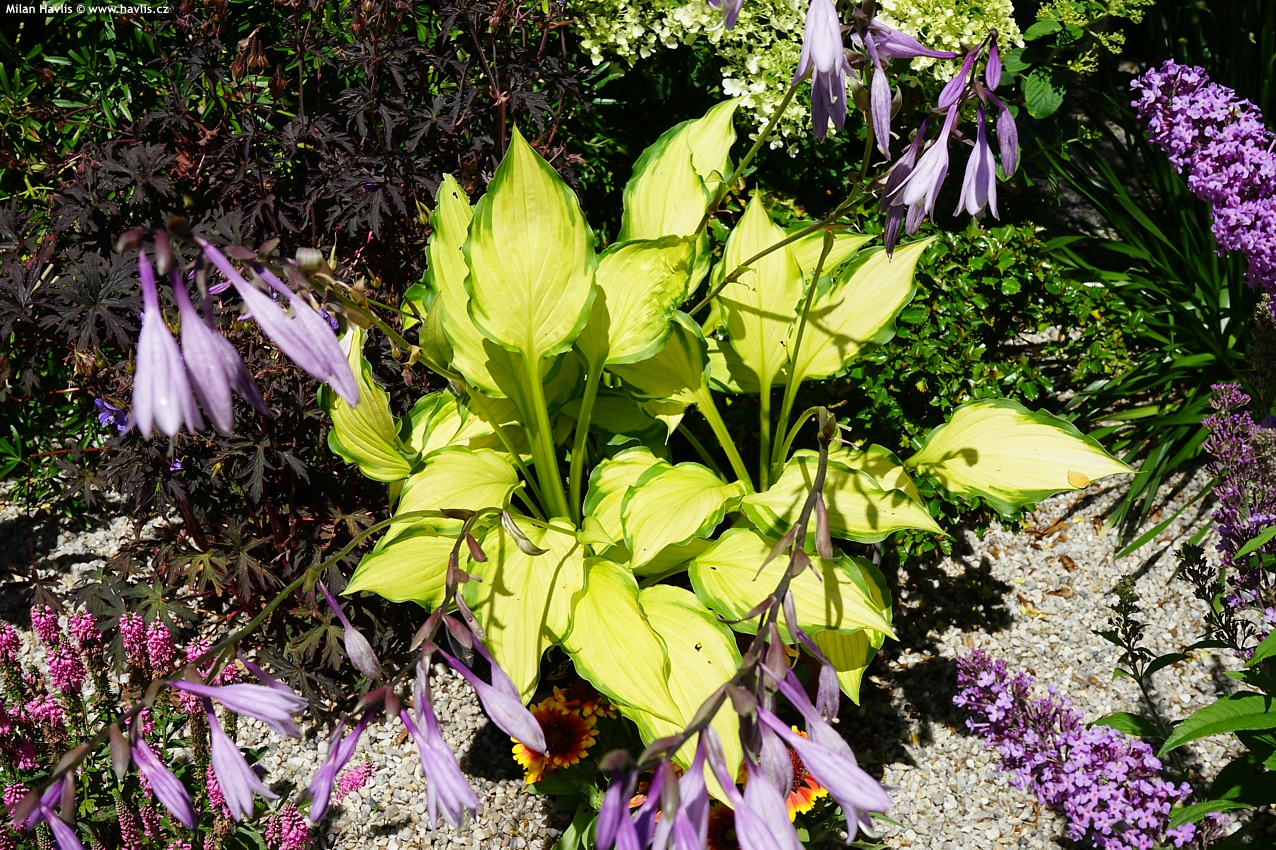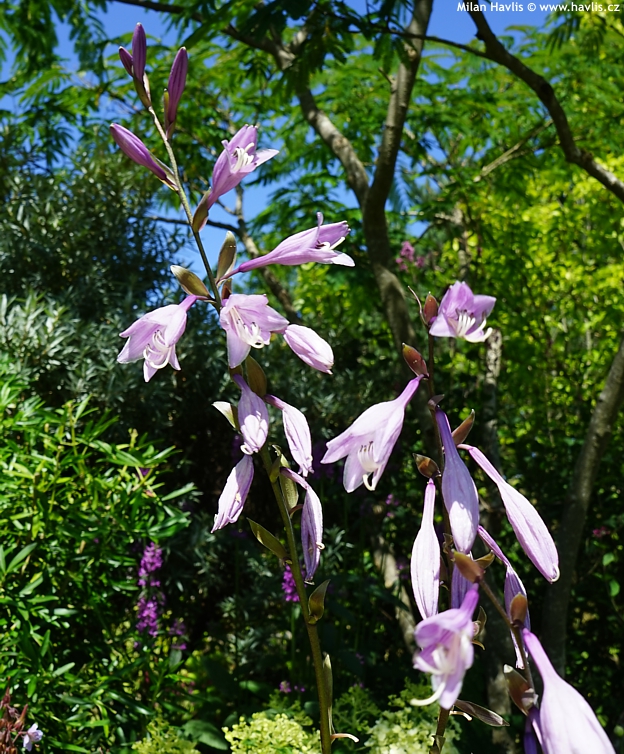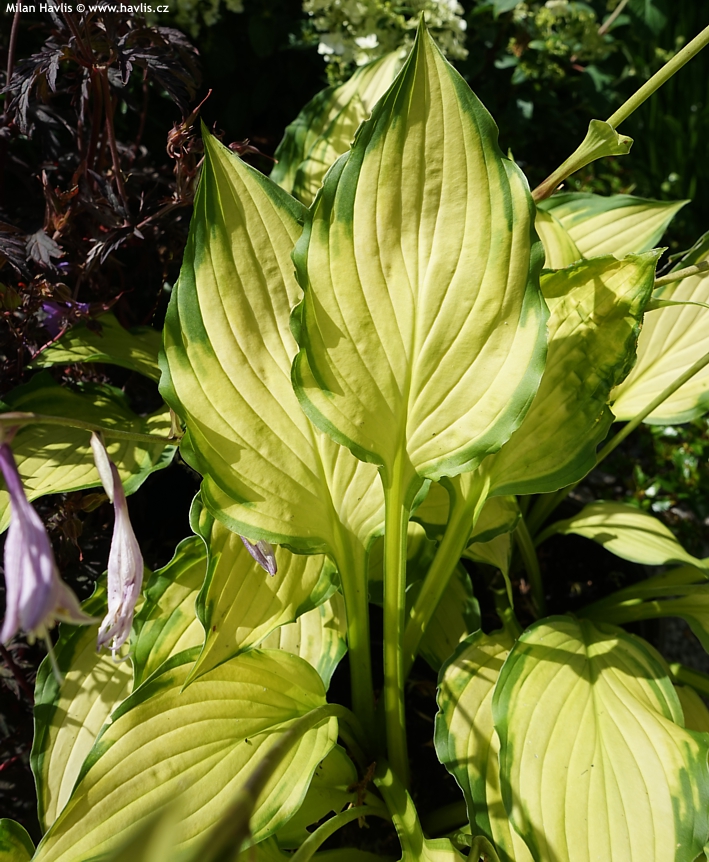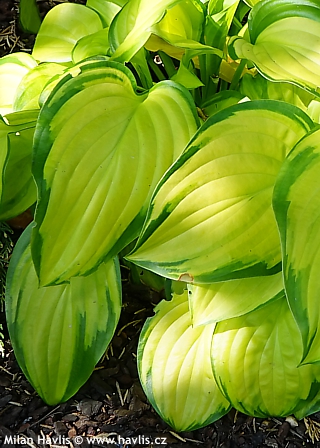Hosta 'LADY GUINEVERE' plantain lily
Hosta
Plantain lilies are reliable perennials from East Russia, Korea, China, and Japan. In the wild they grow in various locations – along rocky streambanks, in alpine meadows, as well as in not too shaded woodland. They are cultivated for their bold foliage, often variegated, and bell-shaped flowers in summer.
Queen Guinevere was the wife of 5th and 6th century British king Artur. She was Welsh, beautiful, and much younger than her husband and legend has it that when she first saw knight Lancelot, she fell in love with him, and since he requited her feelings, they had an affair of which Arthur learnt after a long time. When he was told the truth about his unfaithful wife, he got furious and as he was planning a revenge Lancelot fled the country. King Arthur decided to sentence Guinevere to be burnt at a stake. Despite all Arthur’s efforts to prevent Lancelot from returning with his kinsmen to save her, Lancelot did come back and rescued the queen. Such a strong story led to many adaptations and along with more legends connected with Arthur and Lancelot (Holy Grail, Excalibur) it is no wonder that still today their names are used to call unique inventions as for example this hosta.
Lady Guinevere is a very attractive plantain lily variety with mid-sized leaves. They are about 20x10 cm large, narrowly ovate with a pointed tip, elegantly frilled at margins, bright yellow in the centre and dark green at margins with some medium green highlights on the borderline. In early summer appear 50-60 cm tall, slender stems topped with thin racemes composed of lilac to pale magenta, narrowly bell-shaped flowers. Grow it as a clump or divide young plants and plant them nearby to create a dense groundcover. It grows well in planters and looks great with dark-leaved, part-shade loving perennials and ferns.
Hostas need constantly moist, fertile soil that never dries out – keep it always mulched. They respond well to fertilizing and produce stronger foliage and denser tufts. Ideal location is partial shade, or full sun with some shade during the day. Full shade is fine but plants may not flower as freely or at all. Drought can result in weakened plants that will be prone to diseases, and combination of drought and full sun will damage most variegated cultivars. Beware of slugs and snails who come to feast on their leaves without an invitation. Being deciduous, remove all wilted foliage from previous year in early spring and make sure not too damage emerging bourgeons. They cope well with polluted environment in cities. Hardy to about -40 °C (USDA zone 3).
Last update 27-02-2022

































